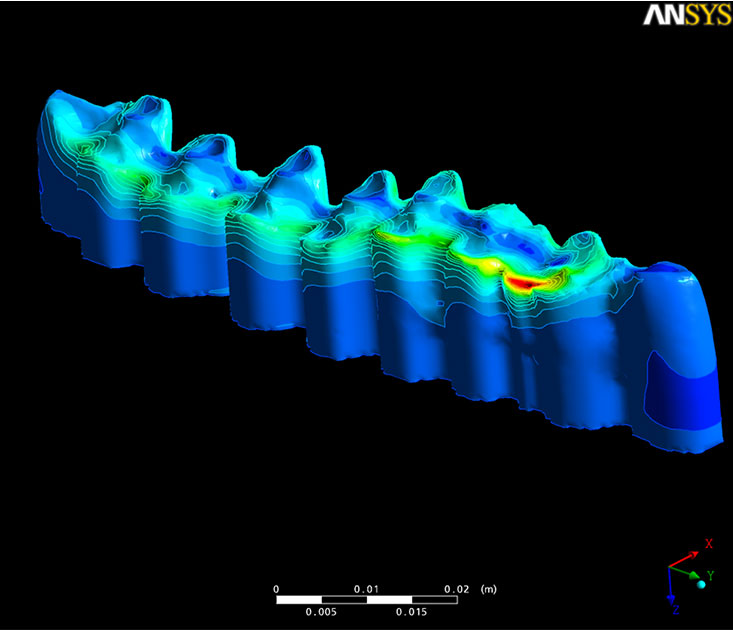Establishment and maintenance of a global tooth usur database (eco-TRUSS)
The working group is working on establishing a comprehensive tooth usur database. It includes
- a worldwide unique comparative collection of high-resolution impressions of molars and premolars of fossil and recent artiodactyla, perissodactyla and primates and
- a digital database now comprising over 70,100 entries, in which dental records are linked to habitat data.

The records describe 444 recent and fossil species, of which about 13,000 belong to sub-Saharan ungulates. The database was built up over more than 17 years within the framework of numerous third-party funded projects (DFG, Humboldt Foundation, EU). The majority of the entries come from museum specimens. In addition to a variety of metadata, the database contains linked information that can be used for modelling approaches: Geo-data and climatic parameters of the site, mesowear scores according to different conventions, and a newly developed automated mesowear system based on standardised photogrammetry. Furthermore, 3D texture parameters of the enamel. This database is unique worldwide, both in its structure and in its scope.
In order to expand the data stock, regular working visits to numerous scientific collections, e.g.
- American Museum of National (New York)
- National Museum of Natural History, Smithsonian (Washington)
- Transvaal Museum (Pretoria), South African Museum (Cape Town)
- National Museum of Namibia (Windhoek)
- National Museum (Rio de Janeiro)
- Zoological Museum (Sao Paulo)
- Academy of Sciences of Moldova (Kishinau)
- Muséum national d'Histoire naturelle (Paris) History (New York)
- Geological Institute (Budapest), Zool. Mus. (Kopenhagen)
- Zoological Museum, Lomonosov State University (Moskau)
- Zoological Institute, Russian Academy of Sciences (St. Petersburg)
- Naturhistorisches Museum (Bern)
- Zoologisches Forschungsisntitut und Museum Koenig (Bonn)
- Forschungsinstitut und Naturmuseum Senckenberg (Frankfurt)
- Museum für Naturkunde (Berlin), Hessisches Landesmuseum (Darmstadt)
and in the wildlife parks and natural habitats of the animals.

